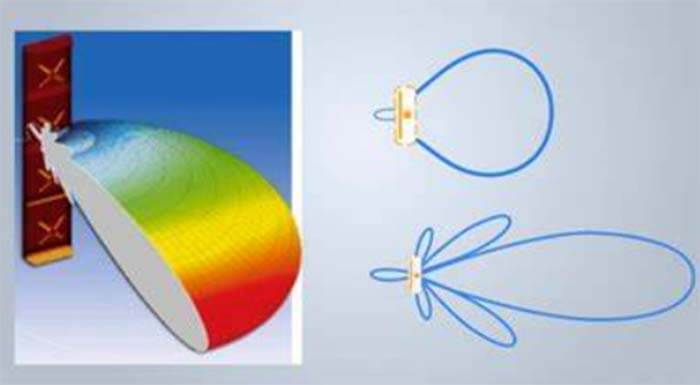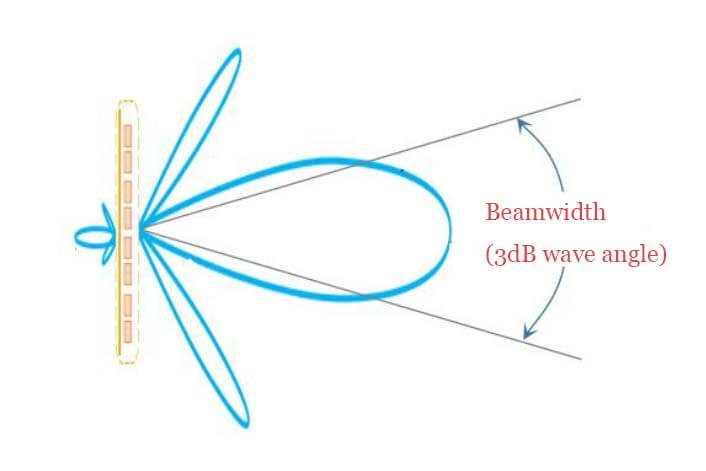After the read of What is an Antenna Negative Gain article, you will learn about:
Can an antenna have a negative gain?
What does negative gain mean in an antenna?
Why is antenna gain negative?
Is it normal to have a negative gain in an antenna?
Why does the antenna have a negative gain?
Does negative gain in an antenna mean signal attenuation?
What is the difference between positive and negative gain?
What is an antenna gain?
Antenna gain is higher than a standard point in the vertical direction (such as the vertical direction or along a selected direction for the direction of the strongest signal), its ability to emit electromagnetic waves in a certain direction relative to an ideal point source of radiation power density, the ratio of the logarithmic value.
To put it simply, it is a parameter used to describe the degree of antenna signal enhancement. However, when we test antenna gain, we will find that it is often measured as a negative number.
So is it normal for antenna gain to be negative? Next, we will explain.
Can an antenna have a negative gain?
There are several gains ie realized gain and IEEE gain. Gain is a function of frequency and direction. If it has no specific direction, it usually means the maximum direction. That means one antenna can have both positive and/or negative gains which depend on direction.
What does negative gain mean in an antenna?
Negative gain means the antenna is lossy (mismatch, low efficiency, etc.). Whether that gain level is good or not depends on the application of the antenna. It is possible that for their application this is an acceptable gain level.

Why is antenna gain negative?
Usually, we all hope that the antenna gain is as big as possible so that it can receive signals better. However, in some cases, the antenna gain may be negative.
This is due to the fact that the antenna radiates weaker in some directions than the standard point, e.g., the antenna radiates an uneven ring pattern, and the standard point we have selected is located next to the maximum radiation angle.
When we choose this standard point as a reference, the radiated power density in any other direction corresponding to its center is less than the power density at the maximum radiation angle.
So, for this case, using the standard point radiation power density to calculate the gain will get a negative value.
Is it normal to have a negative gain in an antenna?
Antenna negative gain can only show that this antenna is in the measured direction than a certain reference source to save power, and can achieve the same radiation effect.
If some angle, that is certainly normal, gain characterizes the energy concentration, antenna radiation direction gain is generally positive, other angles are normally negative, if it is an omnidirectional antenna, gain is not basically high, 0dB or negative is also normal.
As mentioned earlier, when the antenna radiates weaker than the standard point in some directions, its gain value will be negative. Therefore, it is normal for the antenna gain to be negative in this case.
There are a few possibilities if the peak gain is negative, firstly, your antenna’s losses, including dielectric losses, and so on, are too large and can be negative;
Secondly, the location of your resonance frequency point, you observe the frequency point of the gain and your resonance frequency point to correspond, after all, 3-db gain bandwidth is generally not very wide.

Does negative gain in an antenna mean signal attenuation?
Negative gain antenna does not mean that the signal has been attenuated. Antenna gain and attenuation are two concepts.
In fact, the gain value of an antenna is the ratio of its total radiated power to the product of a certain uniform flow density per unit mass in the direction relative to the standard point (or along a selected direction), regardless of any other factors, such as the transmission line, the input impedance, and receiver noise, etc. So it does not reflect the signal attenuation.
Therefore, it does not reflect the strength or longevity of the signal.
What is the difference between positive and negative gain?
The overall gain of the system with positive feedback is greater than the gain without feedback. The overall gain of the system with negative feedback is less than the gain without feedback. Positive feedback is extensively used in oscillator circuits.
Is attenuation positive or negative?
A negative dB value explains attenuation/loss while a positive dB value explains amplification/gain.
Besides this What is an Antenna Negative Gain article, you may also be interested in the below articles.
Internal Antenna VS. External Antenna
LTE Vs. 5G: Is 5G Better Than LTE?




